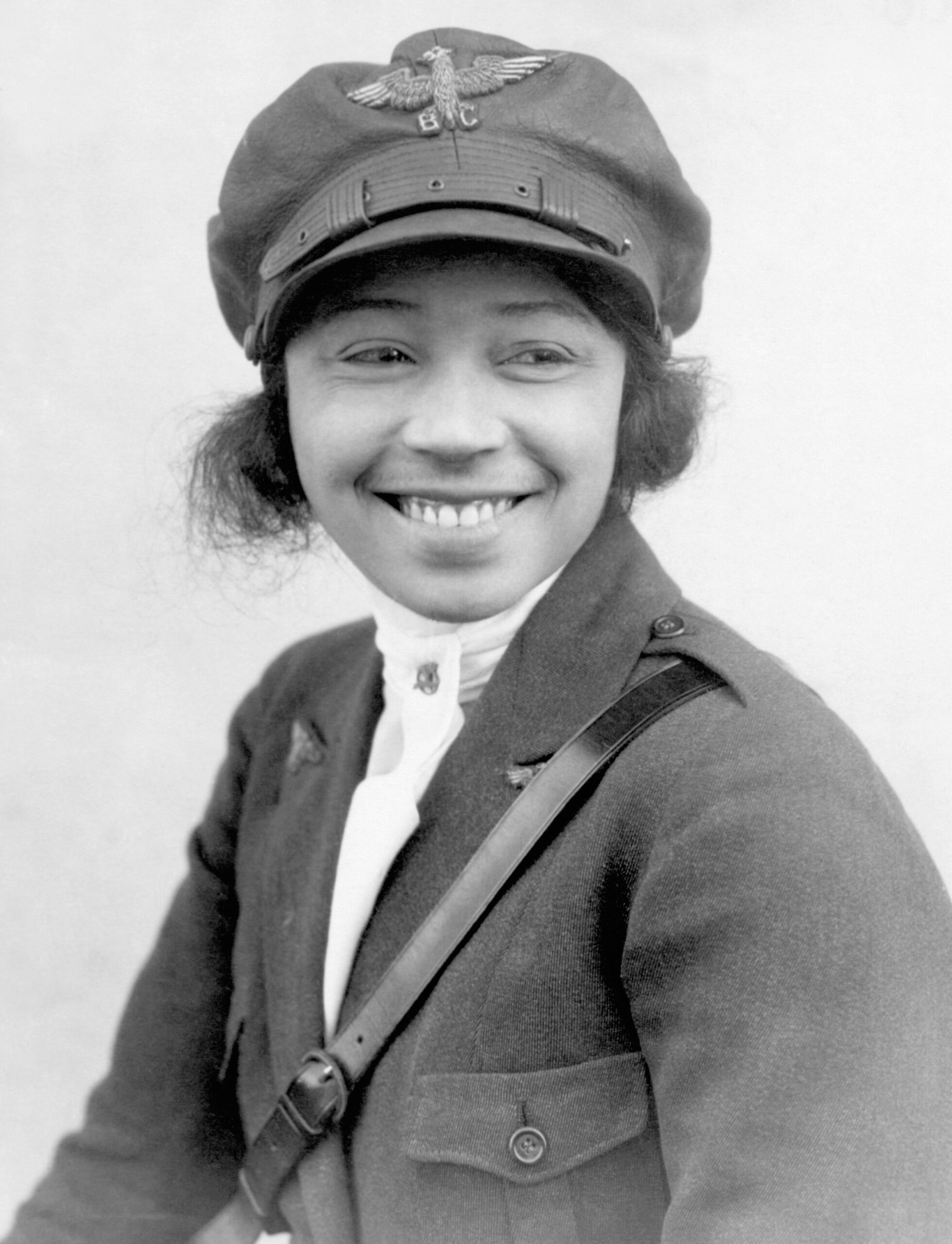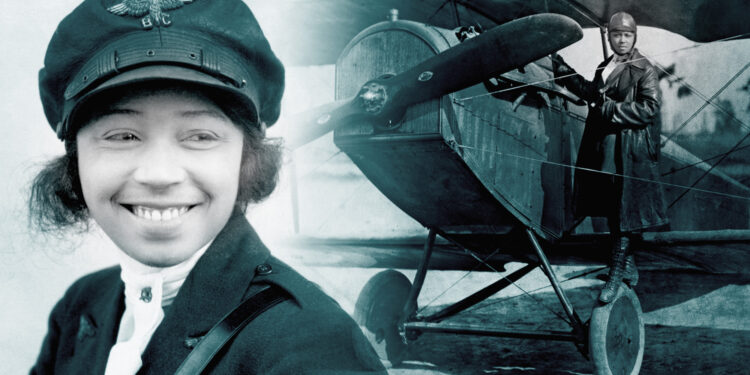Bessie Coleman smashed barriers as the first Black woman pilot during a period of extreme discrimination against African Americans and women.
Notwithstanding the difficulties, she followed her love of flying and rose to prominence as a representation of bravery and tenacity. Around the world, pilots and visionaries are still motivated by her legacy.
A Humble Beginning

Bessie Coleman was the tenth of thirteen children born on January 26, 1892, in the small Texas town of Atlanta. George and Susan Coleman, her parents, were sharecroppers who made a living off of the uncooperative soil.
Susan, an African American woman, and George, who is of Native American (Cherokee or Choctaw) and African American ancestry, taught their children the importance of education and hard work.
Young Bessie walked six miles every day to attend a one-room schoolhouse, where her talent for reading and maths was evident despite the harsh segregation of the time.
Chasing the Horizon
Bessie’s goals brought her to Oklahoma’s Coloured Agricultural and Normal University (now Langston University) when she was eighteen.
However, after only one semester, her academic career was cut short due to financial problems. Unfazed, she relocated to Chicago because her goals aligned with the city’s energy.
As a manicurist, Bessie listened to pilots’ stories from World War I with great interest, each one feeding her ambition to fly.
Defying Gravity and Prejudice
Bessie’s desire appeared to be bound to the ground during a time when women and African Americans were not accepted into American flight schools.
Unwavering in her ambition, however, she studied French and travelled to France in 1920 to attend the prestigious Caudron Brothers School of Aviation.
She became the first African American and Native American woman to obtain a pilot’s licence from the Fédération Aéronautique Internationale on June 15, 1921, amid the rumble of engines and the smell of oil.
Queen Bess Takes Flight
Following her return to the United States, Bessie—fondly known as “Queen Bess”—wowed crowds with her audacious aerial stunts.
More than just amusement, her barnstorming performances—which featured figure eights, loops, and jaw-dropping dives—were potent protests against the allure of gender and racial prejudice.
Bessie made sure her concerts were inclusive and embodied the very idea of equality and unity by refusing to play for segregated audiences.
Bessie Coleman vs. Amelia Earhart
Amelia Earhart and Bessie Coleman were trailblazers in the male-dominated profession of aviation. Although their paths were comparable, they nevertheless encountered distinct obstacles because of their respective racial, gender, and cultural standards.
Bessie Coleman became the first Black woman and the first African American to obtain an international pilot’s licence on June 15, 1921, when she obtained her licence from the Fédération Aéronautique Internationale (FAI) in France.
Two years later, on May 16, 1923, Amelia Earhart was granted her pilot’s licence by the National Aeronautic Association (NAA) in the United States.
Thus, Bessie Coleman obtained her pilot’s licence before Amelia Earhart.
However, Earhart’s record-breaking flights and media attention helped her become more widely recognised throughout the world.
A Dream Deferred
Bessie’s vision went beyond individual recognition. To help others reach the skies she so cherished, she wanted to start a flight school for African Americans. Unfortunately, her plane malfunctioned on April 30, 1926, while on a test flight in Jacksonville, Florida, due to a wrench that was accidentally left in the engine.
Bessie was flung from the plane as she was scouting the area for a parachute jump without wearing a seatbelt, and she died tragically at the age of 34.
An Enduring Legacy
Despite her short life, Bessie’s influence endures. For upcoming generations of pilots, especially women and people of colour, her bravery and perseverance cleared the runway.
Her tale continues to inspire us, reminding us that the sky is only the beginning and not the limit, and the U.S. Postal Service honoured her with a commemorative stamp in 1995.
So, when you gaze upward and see a plane etching its path across the azure canvas, think of Bessie Coleman—the fearless Queen of the Skies—who dared to dream beyond the horizon and soared, so others might follow.











